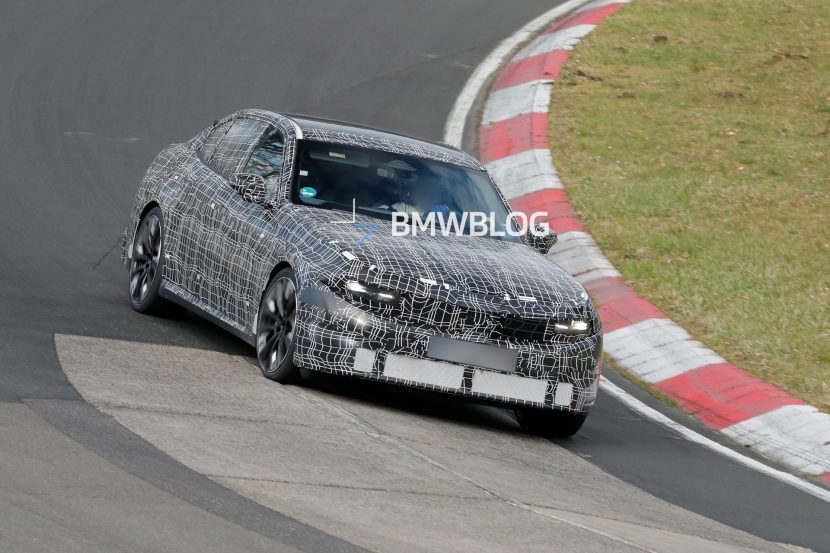The story of i’s demise (or, at least, diminishment) continue to make the rounds of auto sites and have even percolated up to generic news aggregators. In most cases the stories reflect on the dismal sales of hybrid and EV vehicles, lack of EV infrastructure, and gloomy economic forecasts for why BMW has parred the i sub-brand to the bone – and in fact are looking for a graceful exit from EVs. Horse manure.
First, let me get this out of the way immediately, I have a lot of respect for Automobile Magazine. I subscribe to it and I have met a large number of their staff and to a (wo)man they are very, very, good at what they do. It is an excellent magazine, well edited, and with a diversity of opinions that makes for lively reading. And, as icing on the cake, Robert Cumberford does periodic styling analysis that can advance anyone’s understanding of automotive styling. But I believe they are on the wrong track with the i stories.
In the latest issue of Automobile, August 2012, they’ve dropped the initial, BMW wished for, production goal numbers to 50,000 i3s and 5,000 i8s. That’s much closer (and cuts the originally reported numbers in half), but it’s not what BMWBLOG has been hearing from the very beginning, and that is that the i3 would be built in the 30,000 units a year range and that the i8 would be an ultra-premium offering.
Here are a couple of additional thoughts to add to what we have already published on this topic. One is the desirability of the i3 versus competitors, such as the Mitsubishi i-MiEV and Nissan Leaf, and the second on the production capacity of Leipzig.
The i3 will be built on a lightweight platform built specifically for an EV application rather than using an existing IC engine chassis (which are at a weight disadvantage to begin with). Batteries represent a significant fraction of the weight of an EV and since the energy density is so much less than a gasoline, weight optimization is imperative. That is best done when the EV is designed from a clean sheet of paper. Which BMW is doing with the i3. Further, the i3 is rear wheel drive and will out accelerate a 118i. Not shabby for an EV. BMW has decided to trade some range for performance. They had that luxury thanks to the light weight – optimized for EV – design.
A big factor in the number of units that can/will be built annually is the production process and production capacity of the Leipzig assembly facility. The i3 and i8 will be assembled on the same production line that the 1 series and X1 are assembled on. That means that the i models will have to be interleaved into the current production schedule. It’ll be tight in Leipzig, they’re close to capacity now.
And the process for building the CFRP life modules has to be taken into account. At Frankfurt last year I had an opportunity to ask a question regarding the number of i3s that would have to be built each day to meet a 30,000 unit a year number. I said that based on back of the envelop calculations (accounting for plant shutdown, holidays, etc) that BMW would have to build between 125 and 175 i3s a day. I was complimented on my math and told they would say between 100 and 200 a day.
Now figure there are two ten hour shifts a day at the CFRP pressing hall (four hours reserved for maintenance). Also, based on what I saw on the i3/i8 unveil last June in Frankfurt, it would appear that there are approximately six or more CFRP panels that make up the life module (passenger compartment) of an i3. The RTM production process for the CFRP will shave significant cycles off the previous process times to produce CFRP panels. However, I believe it still will take around ten minutes per part to lay-up, press, and remove the individual pieces from the press. Make that one life module an hour per press. Or twenty cars in a two shift scenario per press. Figure at least eight and possibly ten RTM presses are required. That is a large investment. If they had planned to make 50,000 i3s a year they would almost had to have doubled that investment – 100,000 would have tripled it. Bad math.
As an aside Dieffenbacher makes a CFRP press ( High Pressure Resin Transfer Molding machine) that is worth looking at. Here’s a link:
http://www.dieffenbacher.de/en/forming-division/plastic-forming/cfk/procedure.html
At the end of the day, BMWBLOG believes that the 30,000 number is still a target for the i3, that the i8 will be built in very small numbers to maintain exclusivity, and the biggest threat to those production goals is the uncertain economy.




































































